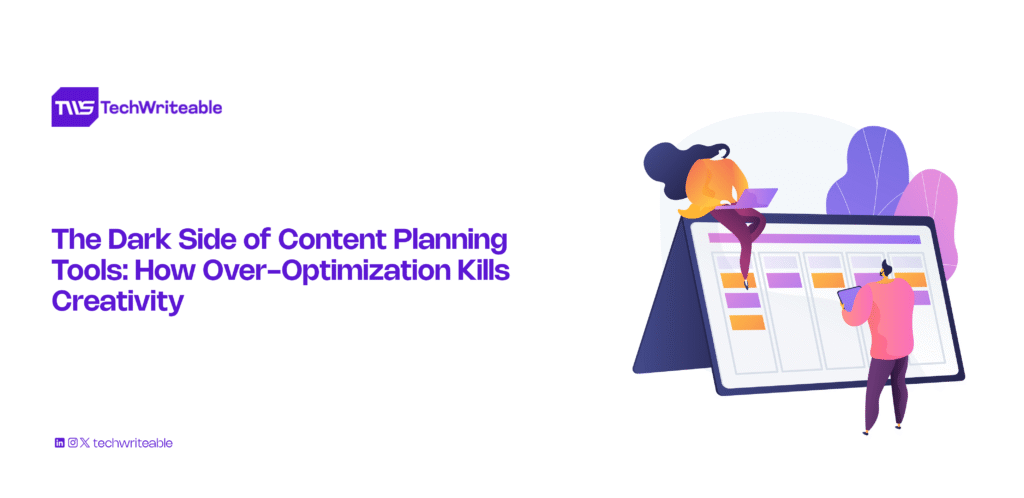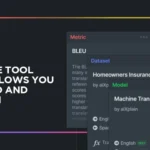Content planning tools have been a staple in every digital marketer’s arsenal. From planning calendars to automating social media postings to parsing engagement metrics, these software programs promise organization, productivity, and growth.
But there is a conversation no one seems to be having, one that’s too often overlooked in the haste to rank, schedule, and optimize.
The truth is, the more we depend on content planning tools, the more we can suffocate the one thing that provides content with any value in the first place: creativity.
Wherever you look on the Search Engine Result Page (SERP), the same story is there; “Top 10 Content Planning Tools,” “How to Schedule a Month’s Worth Content in One Hour,” or “Best AI Tools for Content Workflow.”
But while such posts are excellent at outlining features and functionalities, they never seem to broach the darker side: what happens when the creator becomes more concerned with checklists and templates than ideas and emotions?
Let’s talk about that.
The Rise (and Reign) of Content Planning Tools
The internet is fast-paced and for brands and creators to keep up, they turn to systems, and tools like; Trello, Notion, Asana, Buffer, Later, and ContentCal.
These tools make campaign planning, team collaboration, and regular publishing easier. AI tools do it one better today, serving up topics ideas, headlines, and even complete posts based on SEO recommendations.
In so many ways, it’s a marvelous thing. Order replaces chaos, deadlines become more manageable and it’s now easier for teams to stay aligned.
But somewhere along the way, we started to trade instinct for instruction, and imagination for optimization.
Don’t get me wrong, it’s not wrong to utilize these tools for content planning, but there’s a distinction between using a content planning tool as a tool to support your creativity and letting it replace your creative process.
Creators who allow these tools to override their creative process slowly get caught up with;
- Sticking rigidly to pre-conceived themes.
- Forcing concepts into a calendar when something new does not come to mind.
- Generating content for search engines, not humans.
- Chasing trends, rather than leading them.
- Thinking in “slots” and “categories” instead of stories and sparks.
Ironically, these tools designed to help us be more creative and productive often box us in, pushing us toward safe, predictable, formulaic content.
The Algorithmic Echo Chamber
AI-powered content planning tools are trained on what’s already out there, the same headlines, the same keywords, and the same patterns.
While they’re great at identifying what’s popular, they’re not always good at spotting what’s original or emotionally resonant.
So what happens?
You begin creating content that sounds like everything else. Your blog reads like your competitor’s blog. Your tweets look like recycled LinkedIn carousels.
Your Instagram captions feel robotic like they’ve been churned out by a productivity machine.
You end up in what we like to call the “content optimization hamster wheel”, constantly spinning, publishing, publishing, and tweaking, but rarely saying anything new.
Creativity Doesn’t Live on a Calendar
Some of the best content ideas are random, messy, and unscheduled. They come from lived experience, late-night thoughts, moments of boredom, or deep conversations, not from a “Monday at 9 am” content slot.
But when you are tied to a hyper-planned content calendar, spontaneity is sacrificed. If the idea doesn’t fit the monthly theme, it’s put on the shelf or discarded.
That’s a problem because real creative magic does not respect timelines. It disrupts. It surprises. It refuses to take its turn.
Real-World Example: Creativity vs Calendar
Let’s say you are creating content for a fintech business. Your calendar tells you April is “Budgeting Tips” month. You’ve scheduled posts for every Tuesday and Thursday, mapped out your hashtags, and even pre-drafter your captions using ChapGPT and Grammarly.
Then one morning, there’s a trending topic on X about the emotional cost of saving money in a toxic economy. It’s raw, it’s real, and it’s resonating with your audience.
But your content calendar doesn’t have space for it. And your team’s used to “sticking to the plan.”
The Illusion of Productivity
Let’s be honest, ticking off tasks in a content tool feels good. The dopamine hit of “completing” a post, moving a card on Trello, or watching a buffer queue fill up gives a sense of accomplishment.
But productivity isn’t always creativity. And quantity isn’t always quality.
Creating one unforgettable piece of content that connects deeply can do more than 20 average ones written to meet deadlines. But when tools focus on volume, publishing frequency, and SEO scores, it’s easy to fall into the trap of doing more, while saying less.
Reclaiming the Creative Process
So what’s the fix? Do we throw out content planning tools altogether? Absolutely not. The goal is not to abandon structure, but to reclaim balance, and this is how;
Build Space for Creative Freedom
Leave intentional gaps in your content calendar for spontaneous ideas. Not every post needs to be planned two months in advance. Allow flexibility to jump on relevant topics or experiment with something unexpected.
Use Tools as a Support, Not a Crutch
Let tools help with logistics, collaborations, and reminders, but never let them dictate your voice or ideas. Start with human ideas, then use tools to refine and deliver them, not vice versa.
Schedule Creative Time, Not Just Content
Carve out time in your week for mind-dumping, brainstorming, and unplug thinking. No templates, no tools, just ideas. Creativity needs freedom, quiet, and a touch of chaos.
Clean Out Your Calender of Redundancy
Look at your already scheduled posts. How many of them are potent? How many are like fluff? Kill the fluff. Be courageous enough to post less, but write more.
Be Human First
Before you hit “publish,” ask yourself: would I care about this if I saw it in my feed? Does this sound like a human wrote? Is this valuable, surprising, or emotionally engaging?
Final Thoughts
Content planning tools are genius when used wisely. They keep us organized, efficient, and consistent. But when they become the creative compass rather than the delivery vehicle, we begin to lose the heart of storytelling.
At Techwriteable, we believe content can do more than get optimized, it can live. That is, hold space for risk, voice, surprise, and real human connection.
So while you’re mapping out your next quarter or bonding with your go-to tool, remember to; plan smart, schedule wisely, and don’t outsource your creativity. Because creativity is not just a task, it’s the soul of your message.



